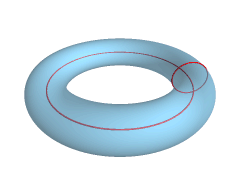|
(2018
midterm assignment) Model Student Midterm answers 2018 #1: Long Essays (Index) |
LITR 4328 |
 |
Natalie Womble
October 1st, 2018
Defining Romanticism: A Study of Distinction and
Eminence
American
literature has always particularly interested me. This is the fourth college
course I’ve taken that is comprised of studying American texts and yet each
re-reading of an anthologized literary work yields new and original reading
experiences. There is certainly something to be said about the depth of literary
art produced in such a young, yet powerful nation. Moreover, the potential for
creative abilities we utilize in the present being unabridged is dependent upon
our ability to understand and appreciate that of those who came before us.
Especially a period like the Romantic era that plays such a significant role in
shaping, and has lasting effects on, the way literary arts are viewed and
practiced today.
Previously, my knowledge of the Romantic or Renaissance
era missed a few different components that were introduced to me in this course,
and even literary terms and ideas that I had previously studied were now
questioned or approached in a new way. These revelations came about while
studying a few texts in particular.
In my reading
experience, the first distinct quality of Romanticism that I was able to
conceptualize manifested through paying attention to what was valued in the
literature. Romanticism bestowed value and validity to the things that the
previous era of Enlightenment ignored or robbed of focus. Poe’s “Sonnet – To
Science” is the epitome of this quality. Poe asks “Why preyest thou thus upon
the poet’s heart, / Vulture, whose wings are dull realities” (4 – 5)? He makes
it very clear that things like beauty and emotions are undervalued by cutting
off their potential with factual explanations. The discoveries of the
Enlightenment cast a shadow on the intangible realm of humanity; our concern
became naming the stars and mapping their movements, We were no longer
captivated by their light or inspired by their beauty. Romanticism is the
inevitable reactionary shift in focus when the ability to believe in something
greater or supernatural is taken away. This reaction is demonstrated by what
characters, images, circumstances, or perspectives became sensationalized in
Romantic literature as a result. The dynamic between fact and fantasy is
presented brilliantly in Walt Whitman’s “I Sing the Body Electric.” The poem
reflects that border between romantic and real by portraying the mundane as
fantastic. When describing the male form, Whitman abandons all scientific jargon
in favor of a more enchanting portrayal, “he is action and power, / The flush of
the known universe is in him . . . The wildest and largest passions, bliss that
is utmost, sorrow that is utmost become him well” (7-8, 10).
Once I better
understood the romantic essence, I was able to approach another of Romanticism’s
distinct qualities: Transcendentalism. This is the tool through which Whitman
and Poe wrote reality, with room to reach for something beyond. The exemplary
quintessence of which is written by Ralph Waldo Emerson in his series of essays
titled “Nature.” Emerson clarifies the importance in being able to transcend
beyond reality, “the invariable mark of wisdom is to see the miraculous in the
common” (26). The dullness of a perspective focused only on what it can
currently comprehend is outshined by the astonishing revelations that happen
when one begins to reach, whether outwardly into space or introspectively
within, beyond: “The sordor and filths of nature, the sun shall dry up, and the
wind exhale” (30).
The dynamic
between fact and fantasy is emphasized through another motif specific to
Romanticism: the sublime. The sublime is demonstrated in the ability to
experience the summation of opposing forces and perceive them both fully. In
class lecture it was described as things “so beautiful they are terrifying.” The
sublime exists as the harmonious connection of two powerfully conflicting
emotions. Poe’s “Ligeia” tells the story of a man mourning the loss of his late
wife, Ligeia, re-marrying only to watch his new wife become slowly taken by
death as well, and through that death experiencing the reemergence of his first
love in all ways haunting – as if Ligeia was being resurrected in her body.
Ligeia is the sublime personified. Poe describes her eyes as having “delighted
and appalled” him. Of her affection, Poe illustrates Ligeia’s expressions of
love as “the overflowing of a heart whose more than passionate devotion amounted
to idolatry” (11-12). When visions of Ligeia occur after her death, the text
describes the invoked “amazement” and “profound awe” struggling with each other
within the widower. Romanticism employs the sublime as what exists between being
delighted and appalled, devotion and idolatry, amazement and awe. It is the
comprehensive whole of both sides of duality and being able to understand and
experience them simultaneously.
The allure of
Romantic literature is easily understandable. The sensationalized idea of nature
unlocking life’s secrets, the sublime mysteries bordering opposing elements, the
search for depth and meaning in the mundane, the inspirational spirit of
transcendence; all of these and more are exclusively romantic literary themes.
The American Renaissance and the Romantic period in general are arguably the
most seductive and fantastic of all literary eras, and at the very least,
Romanticism serves literature scholars in reminding them of the immeasurable
value of what we study; the pure, concentrated power of words invoking emotions
that are far stronger than fact and logic could ever hope to be.
 |
 |
 |
